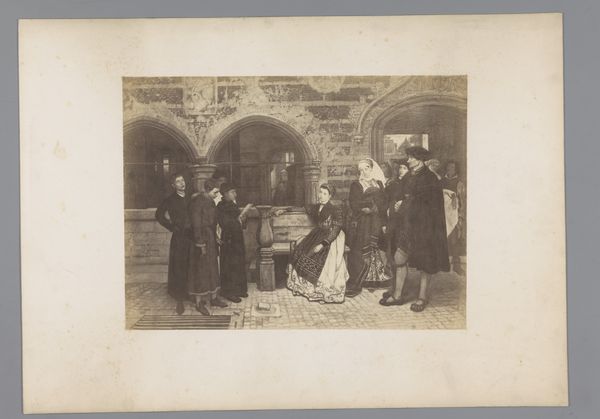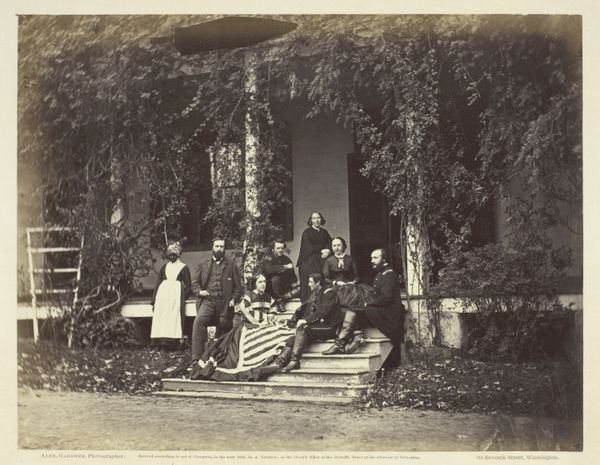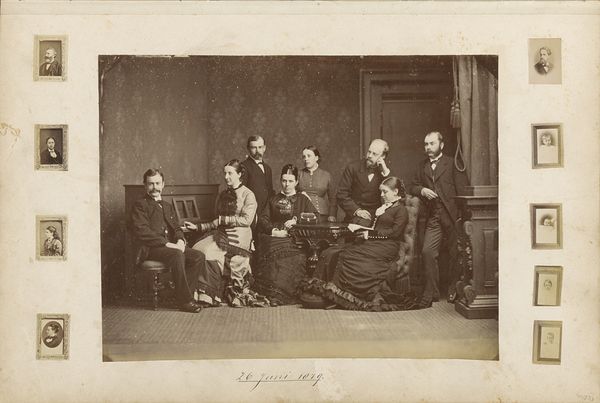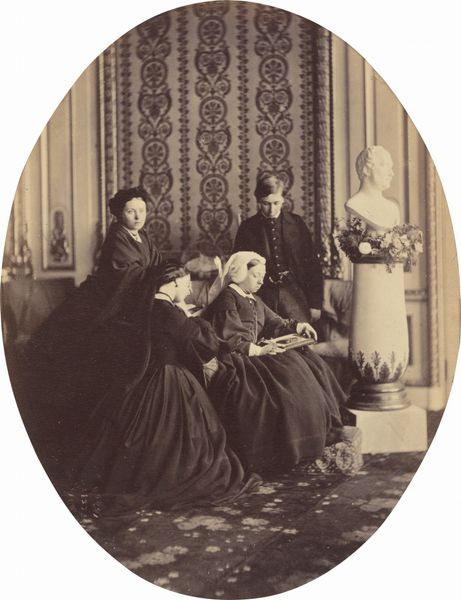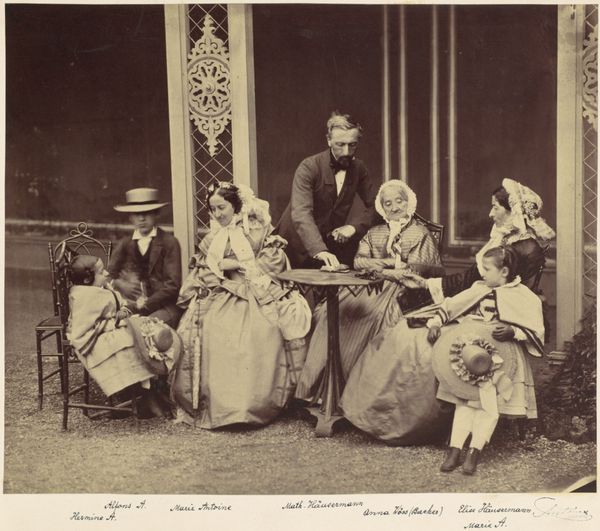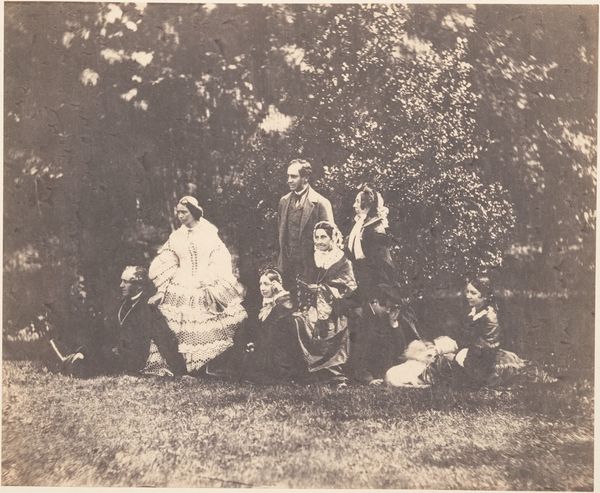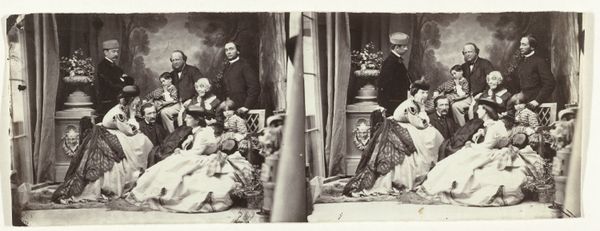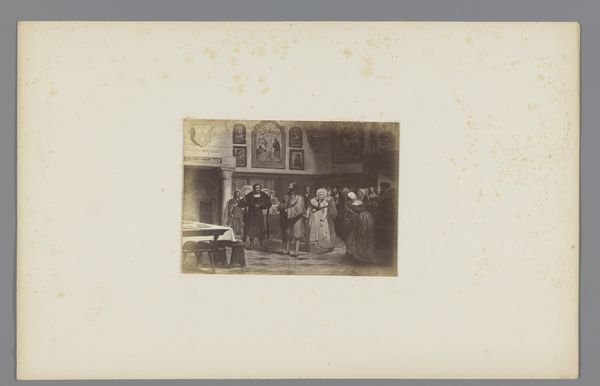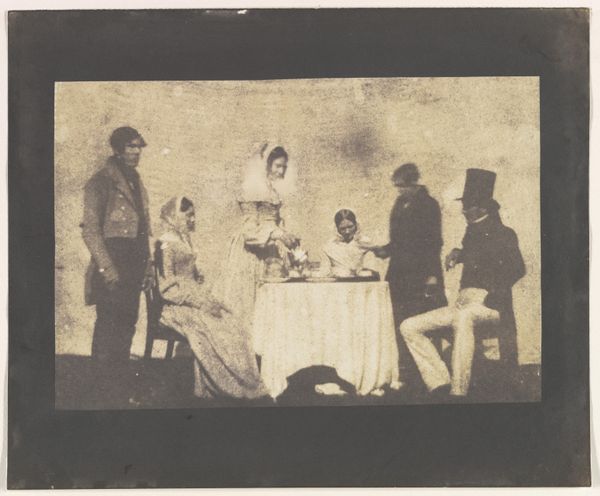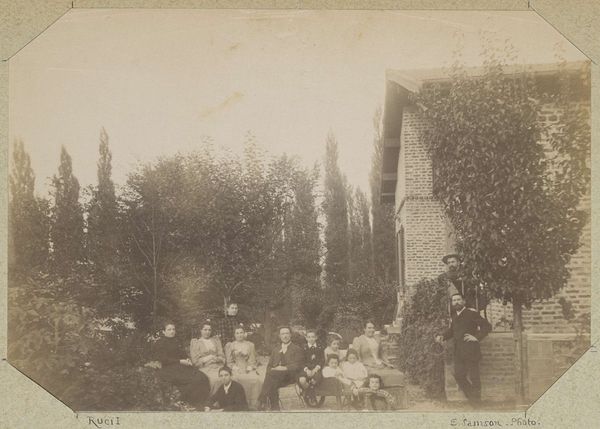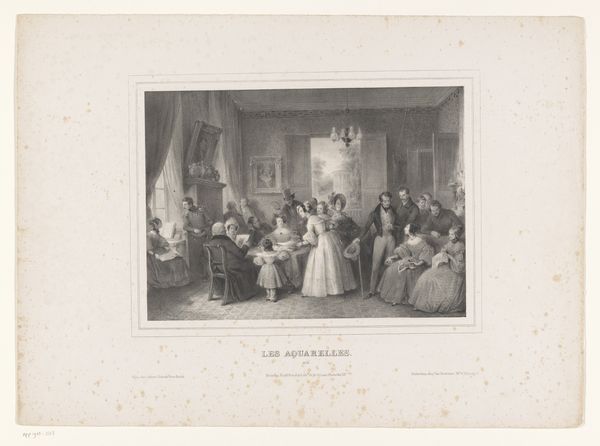
Groepsportret voor een huis, in het midden Stephan Piek met zijn vrouw Louise Maria Piek-Fellinger 1889 - 1893
0:00
0:00
photography, gelatin-silver-print
#
portrait
#
wedding photography
#
photography
#
historical photography
#
gelatin-silver-print
#
19th century
#
history-painting
Dimensions: height 72 mm, width 97 mm
Copyright: Rijks Museum: Open Domain
Curator: This gelatin silver print, dating from around 1889 to 1893, presents a "Groepsportret voor een huis, in het midden Stephan Piek met zijn vrouw Louise Maria Piek-Fellinger"—a group portrait for a house, with Stephan Piek and his wife Louise Maria Piek-Fellinger at its center. It's a striking example of late 19th-century family portraiture. What's your immediate take on it? Editor: Well, immediately I get a "day at the vicarage" vibe, if that makes sense? It feels both staged and intimate, almost like you've stumbled onto a very serious garden party, and everyone is politely pretending not to notice. Curator: That’s an interesting observation. Considering its creation in the late 19th century, we need to analyze its setting and subjects. Note how it is structured. Stephan Piek and Louise Maria, central and in lighter tones, are flanked by others—perhaps older generations, or other relatives—clad in darker garments. Editor: The composition is certainly…formal. I wonder if that tiny kid even understands what's happening. Is it just me, or does the guy with the hat and cravat think he's a bohemian artist who wandered into the wrong photo shoot? Curator: Such portraits served specific purposes. During this period, photography began solidifying itself as a means of documentation and commemoration. We can analyze this work through the lens of class, gender roles, and the very act of representing family and lineage for posterity. The attire, the setting—a bourgeois household perhaps—everything communicates certain social standing and expectations. Editor: I do like that tension, that forced…presentation of propriety. The very staticness somehow tells a story of ambition and how exhausting it can be to keep up appearances, don't you think? Curator: Precisely! It prompts reflection on performative social roles, gender dynamics, and societal structures—revealing the hidden complexities within seemingly simple, "posed" scenes. Editor: For all its rigid formality, there’s also something vulnerable about them allowing a stranger—the photographer—into their space to document what they hope represents them for generations. A family's hope trapped in sepia tones...It’s beautiful, and terribly sad. Curator: Indeed, such photographs act as historical and personal narratives. We started analyzing merely aesthetic forms and expanded to grasp historical moments shaped by socioeconomic forces. Editor: It really underlines how art, even something as apparently straightforward as a family snapshot, is always a constructed story. Never just a picture; always an argument. Thanks for guiding us through this fascinating portrait.
Comments
No comments
Be the first to comment and join the conversation on the ultimate creative platform.
